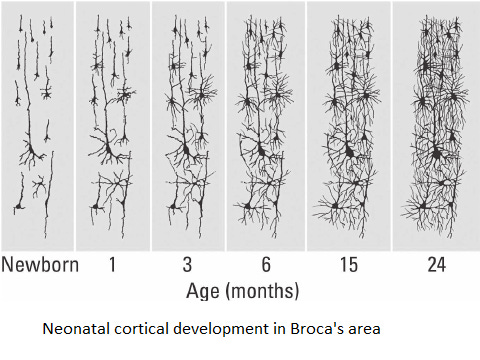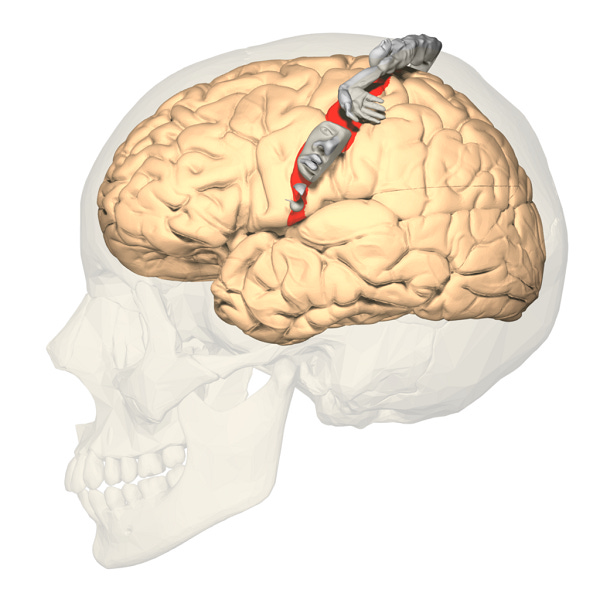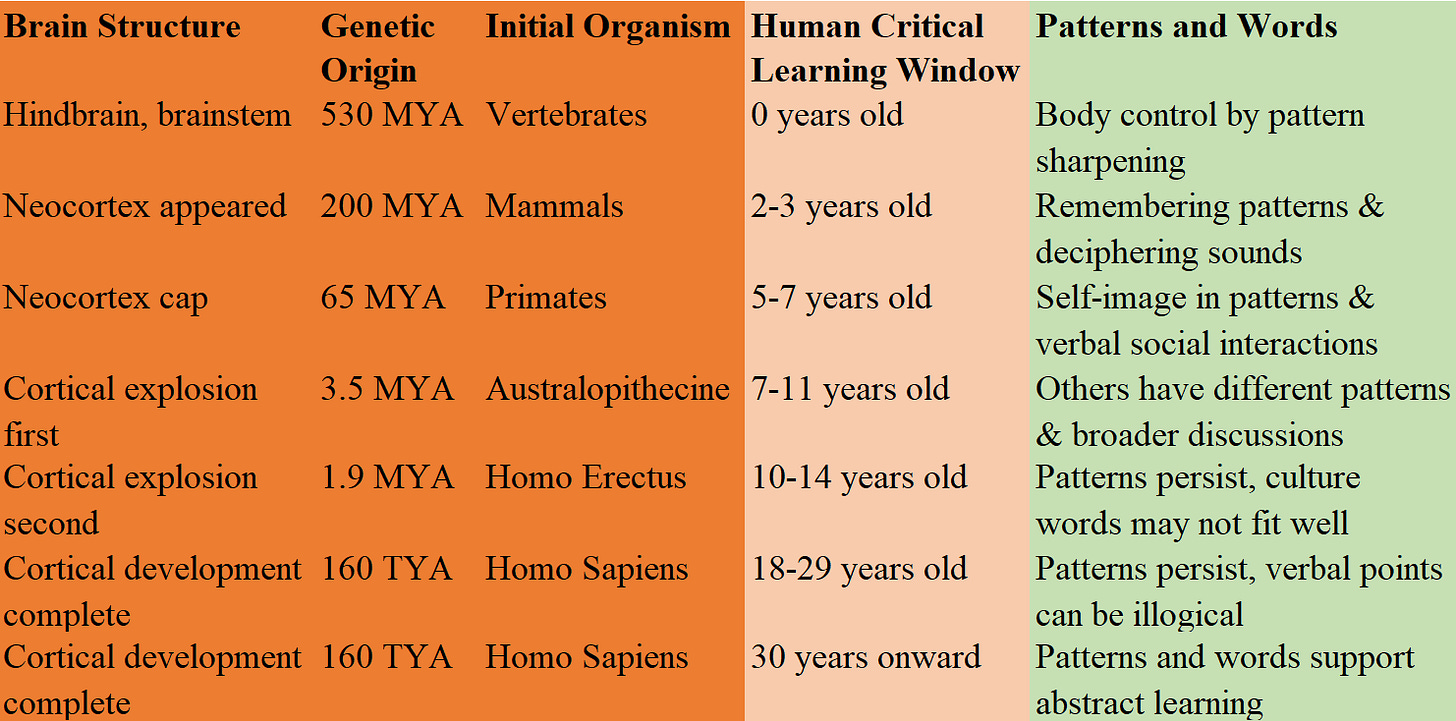Two Ways to Understand
In a technical writing class, when we asked “why,” the teacher pointed to model sentences rather than explaining our mistakes. For a science-bred boy, this was maddening. Just tell me what principle I violated on that bleeding red essay sheet. No, when asked the teacher could not state the reason, she would just restate the rule. At first, I thought the teacher was being stubborn and obnoxious. Slowly I came to realize, she didn’t build ideas from first principles, the way I expected—axiom by axiom. Instead, she grouped by resemblance.
So why bring up that class, that teacher, that maddening red pen? Because it introduced me to something deeper about how learning happens.
Definition of Learning
“Learning is the alteration of behavior as a result of individual experience. When an organism can perceive and change its behavior, it is said to learn,” so declares the Encyclopedia Britannica.
When a baby is born, functions like breathing, heartbeat, blood pressure regulation, and reflexes (like sucking, swallowing, and crying) are fully operational, hardwired in the brainstem. They are not learned; however, coordination of movement, sleep-wake cycles, and sensory integration are refined over time. For example, newborns struggle to track movement or stabilize their posture because the underlying brainstem circuits are still untrained. Soon those skills sharpen with experience and maturation. Infants learn from their first days on the Earth.
My point is learning is much more than sitting in classrooms with teachers instructing you. That brings me back to story of frustration in the technical writing class. After some reflection, I realized different neural thresholds could be involved. My creative writing teacher had a relatively low Almost Gate. She saw pattern-based similarities as easily as I grasped Euclid’s axioms and proofs in ninth-grade math.
An associative-preferring teacher and a logic-trained student—a minor clash of thinking modes.
Two Modes, Three Stages: Mapping the Architecture of Learning
Curiously, our two modes of learning—associative and logical—tend to play out in three unfolding stages. At first, we learn by pure association. Then, as language and rules enter, logic begins to co-pilot. Eventually, in formal culture, logic often takes the wheel.
Associative alone
Associative with language which brings along logic
Logic preferred in social culture
We can also trace learning across three growing domains of skill:
Physical Skills – movement, coordination, control (walking, running, biking, sports). Primary knowledge.
Social Skills – language, family roles, group behavior (school, peer conflict, cultural norms). Secondary knowledge.
Maturity – responsibility, ethics, reflection (recognizing consequences, abstract knowledge, discerning truth from opinion). Tertiary knowledge.
Learning without a Teacher and with a Teacher
Unsupervised learning happens when we organize the world using raw experience alone—finding structure without external labels Personal knowledge like self-image,
Supervised learning occurs when external authorities—teachers, parents, peers—frame experience for us, shaping how we categorize and relate information. It’s a faster method when large amounts of material must be absorbed—especially when others have already arranged it into logical hierarchies.
Almost Gates focuses on unsupervised learning, because it underpins how associative thinking unfolds beneath the surface of reason.
Unsupervised Learning
Neurological Changes
The image below shows the visible increase of neural connections from birth to 2 years old in the area of the brain that generates speech. It parallels the infant’s growing sound production. The connections into Broca’s area arrive from the brain’s executive area, while the outbound connections from Broca’s area trigger motor muscles for the throat and lips through the motor area at the top of the brain (see the Maps in the Brain below).
These connections, internal as well as external (both the inbound and the outbound), are formed because of experiences because our genetic inheritance prepares neurons to develop them.
This neural learning occurs via three genetically controlled steps.
1. Gamma amino butyric acid (GABA) increases within the neural environment of Broca’s area. It supports rapid adjustment of synaptic weights to new stimuli.
a. Repeated experience of inputs leads to Hebb’s wiring maxim—neurons that fire together, wire together. In the neonatal case, connections are formed, creating neural pathways tailored to that infant’s world..
2. At a later time, GABA decreases in that brain area. The ebb and flow of GABA infusion is genetically controlled. Fresh input exerts weaker sway over established pathways. As learning slows, the brain leans more on what it has already built.
3. About the same time as GABA decreasing, the output axon has started being wrapped by an electrical insulator, myelin, which increases the speed and distance the axon signal can travel. Myelination signals a shift—learning becomes slower, but signals now travel farther and faster with greater fidelity. From then on, the local layer’s learned output is reliably sent from one brain module to another.
a. While myelin is coating the axon, meanwhile, Schwann cells begin to support signal regeneration, further reinforcing the developing network.
Critical Period
A James W. Kalat notes in Biological Psychology, vision must be learned during a critical window—roughly between the 3rd and 8th month of life. Infants born with cataracts highlight this dramatically. If surgery restores their vision early enough, they learn to see. If not—if the correction comes too late—the retinal signals still reach the brain’s visual centers, but the necessary neural pathways are already set. Experience can no longer change them.
Language acquisition also has well-known learning stages. We’ve all watched infants babble and build speech from around 9 to 12 months. Harold Klawans in Strange Behavior: Tales of Evolutionary Neurology, describes patients whose linguistic struggles reveal a sobering truth: the critical period for learning language ends by early adolescence. If a child hasn't heard or used spoken language by then, future learning is drastically limited—even if their brain is otherwise healthy.
Blank Slate
An old debate in philosophy focuses on human knowledge. Is all knowledge derived from experience or are we born with existing knowledge? This question appears in various philosophical forms: mind-body dualism, a posteriori vs. a priori knowledge, and the classic blank slate versus innate ideas debate.In the visual system, it has been found that certain groups of neurons react preferentially to lines in the visual field, others to involuntary movements, still others to directional movements. In a limited but telling way—akin to Lego pieces—we’re born with a few pre-wired perceptual tools.
For example, in vision we are born capable of resolving (per Kalat):
horizontal lines
vertical lines
edge detection
movement direction
These are very general, primitive structures—not concepts, just perceptual sensitivities. We begin life with shared blocks for constructing a picture of the world, but not with ready-made knowledge or values. This nudges us closer to the blank slate side of the spectrum.
Maps in the Brain
For readers new to cognitive science, the phrase “maps in the brain” may need unpacking. Let’s start with the first—and most famous—neural map.
In the 1930s, neurosurgeon Wilder Penfield discovered a striking correspondence between brain regions and bodily sensations. As he electrically stimulated neurons along the central gyrus—the ridge just in front of the brain’s central sulcus—his conscious patients reported vivid sensations in specific body parts. From their reports, Penfield and his team assembled two mirrored maps:
the postcentral gyrus (toward the back), which receives sensory input
and the precentral gyrus (toward the front), which governs motor control
In the figure, you can see this iconic layout: hands, lips, and tongue loom large—each exaggerated in size according to their neural real estate.
Later research revealed these sensory–motor connections aren’t present at birth. Instead, they form through experience. Repeated interactions—reaching, grasping, vocalizing—cross Almost Gates and activate Hebbian principles: neurons that fire together, wire together. These somatic maps emerge before language, before reasoning—woven from repetition into our earliest bodily selfhood.
One key feature of a neural map is proximity: neighboring neurons represent nearly identical sensations. As you move outward, those signals diverge. Think of the difference between two nearly identical houseflies—until one turns out to be a glinting pool-blue fly. Subtle similarity, then difference, all arranged spatially.
Sensory maps extend well beyond touch. Bats develop elaborate cortical representations for echolocation. And the phenomenon of phantom limbs reminds us that these brain-based maps can persist even when the body no longer matches.
Most relevant here, though, are maps of meaning. These aren’t anchored to physical sensation—they span across experience, memory, behavior. They influence how we choose, how we speak, and how we assign value to actions—whether private or shared. And they form the scaffolding of associative thought.
Semantic Maps
When we talk about semantics, we mean meaning—especially the kind that emerges from your mature understanding of social life and personal concern.
Take the word family. It has a semantic map. At first, you're the only point on it. But when you notice that your mother is someone distinct from you, you've invented the category—family. Soon, you add dad. Over time, others join: siblings, cousins, even surprise additions at reunions that expand the category’s edges.
Semantic maps have structure:
Shared Traits: All members belong to a category because they share something—in this case, a genetic relationship.
Distinguishing Traits: Yet each member also has attributes that set them apart. Your dad isn’t your sister.
Navigation Through the Map: When you substitute one member of the category for another, the mental consequences shift—depending on whether you’re tracing a shared trait (like kinship) or a distinguishing trait (like personality or age).
And just like physical maps in the brain, semantic maps have structure too—except these organize meaning rather than sensation or movement. Neural areas that represent related concepts tend to cluster together. Spatial closeness in the brain often mirrors conceptual similarity. Words and ideas that share semantic, perceptual, or functional features—like mother, nurture, care—tend to be stored near each other in the cortex.
This is where meaning becomes textured, where categories grow flexible, and where associative learning builds complexity from closeness.
Brain Built by Layers
The chart above shows how our brain—and our learning—emerges through evolutionary layers. Each structure, each capacity, developed over deep time and emerges in our lives in roughly the same order that evolution crafted it:
At birth, we rely on hard-wired, life-sustaining circuits—breathing, heartbeat, reflexes—the same neural structures fish carried 530 million years ago.
By ages 2 to 3, memory blooms. We begin to recall, to anticipate, to notice rhythms in speech and sound. These skills echo mammalian innovations from 200 million years ago.
Around age 5, we start shaping memories into a self-image, and use language not just with caregivers, but to socialize, compare, and belong. Primates pioneered these skills some 65 million years ago.
Between early childhood and puberty, we collide with difference. Other minds, other patterns, other logics emerge—and so does uncertainty. Our grasp of language and logic deepens. Homo erectus, who lived nearly two million years ago, would recognize the small-group negotiations, though the scope of modern society might bewilder even their flexible minds.
From 18 through old age, we slowly integrate experience, pattern, and principle. Logic finds its lane; uncertainty, its place. A synthesis forms—personal, imperfect, but often peaceful. Something the earliest Homo sapiens may have hoped for, had they lived long enough to get there.
Coda: Rewiring the Frame
By adulthood, the information that rises into our conscious awareness arrives pre-shaped—filtered through the categories we learned long ago. These categories aren’t just mental file folders. They are patterns and words laid down during critical periods, carved by repetition, and reinforced by culture. We think within them. We reason between them. Often, we don’t even notice they’re there. But they are there. And they are not monolithic.
Try this:
Pick a topic you care about—something you’ve questioned, or doubted, or found yourself unable to resolve. Don’t analyze it yet. Instead, map it. Create a bubble of ideas, words, images—whatever floats up when you think about the topic. Forget grammar and syntax. Connect the bubbles with straight lines. If another idea occurs to you, put it in a new bubble. Some will end up isolated, but some might surprise you with a connection your usual categories might have masked.
You may find that something loosens. That your thinking starts to walk a different path. That’s associative learning at work.




